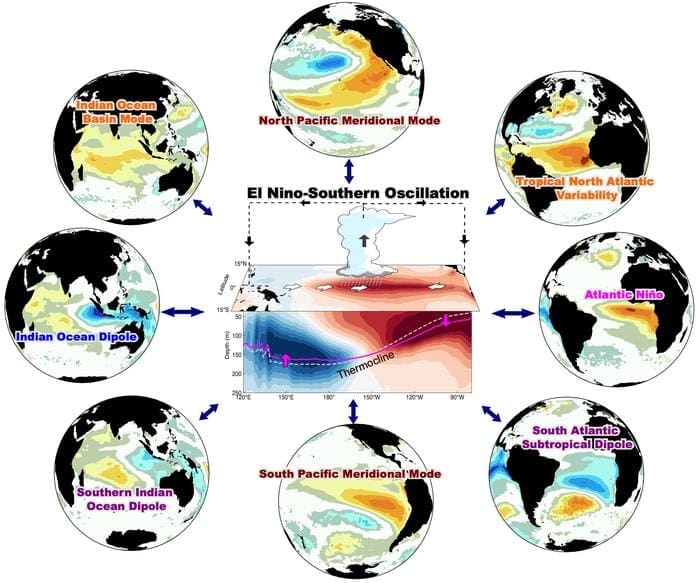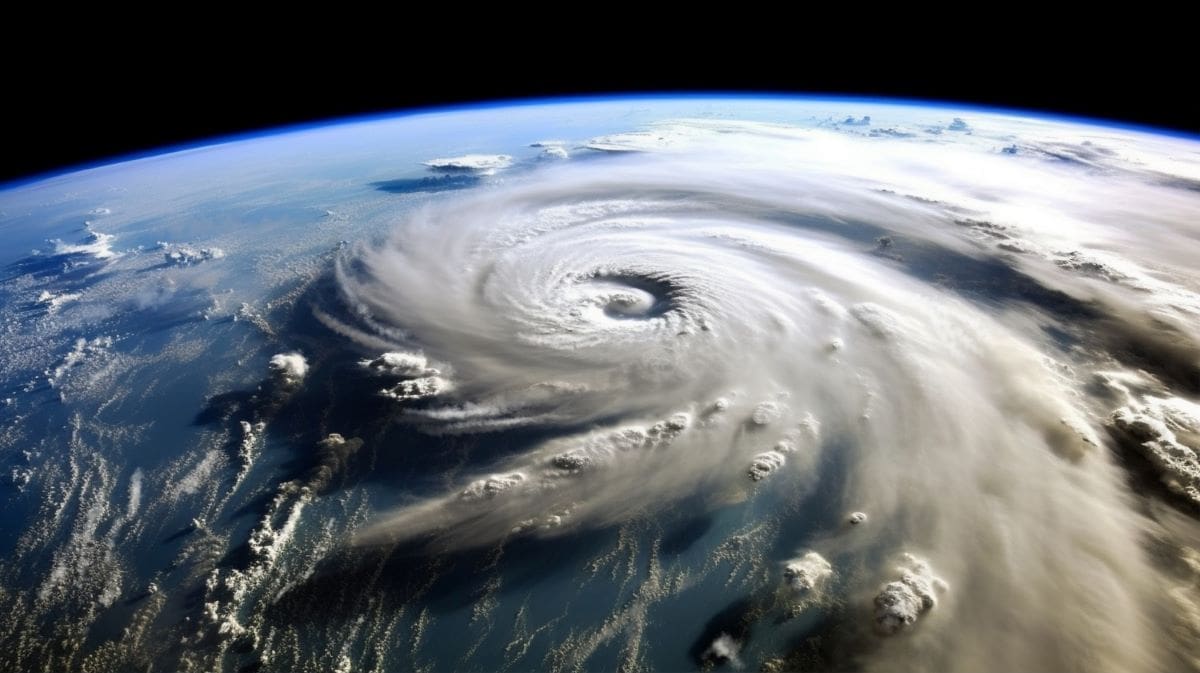By University of Hawaii at Manoa
Across Asia, the Pacific Ocean, and the Americas, El Niño Southern Oscillation (ENSO) brings variations in winds, weather, and ocean temperature that can cause droughts, floods, crop failures, and food shortages. Recently, the world has experienced a major El Niño event in 2023-2024, dramatically impacting weather, climate, ecosystems, and economies globally. By developing an innovative modeling approach, researchers from the School of Ocean and Earth Science and Technology (SOEST) at the University of Hawai‘i at Mānoa are now able to forecast ENSO events up to 18 months ahead of time—significantly improving conventional climate model forecasting.
Their findings, which meld insights into the physics of the ocean and atmosphere with predictive accuracy, were published today in Nature.
“We have developed a new conceptual model – the so-called extended nonlinear recharge oscillator (XRO) model – that significantly improves predictive skill of ENSO events at over one year in advance, better than global climate models and comparable to the most skillful AI forecasts,” said Sen Zhao, lead author of the study and an assistant researcher in SOEST. “Our model effectively incorporates the fundamental physics of ENSO and ENSO’s interactions with other climate patterns in the global oceans that vary from season to season.”

Scientists have been working for decades to improve ENSO predictions given its global environmental and socioeconomic impacts. Traditional operational forecasting models have struggled to successfully predict ENSO with lead times exceeding one year.
AI helps power new forecast
Recent advancements in artificial intelligence (AI) have pushed these boundaries, achieving accurate predictions up to 16-18 months in advance. However, the “black box” nature of AI models has precluded attribution of this accuracy to specific physical processes. Not being able to explain the source of the predictability in the AI models results in low confidence that these predictions will be successful for future events as the Earth continues to warm, changing the currents in the oceans and atmosphere.
“Unlike the ‘black box’ nature of AI models, our XRO model offers a transparent view into the mechanisms of the equatorial Pacific recharge-discharge physics and its interactions with other climate patterns outside of tropical Pacific,” explained Fei-Fei Jin, the corresponding author and professor of atmospheric sciences in SOEST. “The initial states of the extratropical Pacific, tropical Indian Ocean, and Atlantic enhance ENSO predictability in distinct seasons. For the first time, we are able to robustly quantify their impact on ENSO predictability, thus deepening our knowledge of ENSO physics and its sources of predictability.”
Climate model shortcomings, improvements
“Our findings also identify shortcomings in the latest generation of climate models that lead to their failure in predicting ENSO accurately,” said Malte Stuecker, assistant professor of oceanography in SOEST and study co-author. “To improve ENSO predictions, climate models must correctly capture the key physics of ENSO and additionally, three compounding aspects of other climate patterns in the global oceans: accurate knowledge of the state of each of these climate patterns when the ENSO forecasts starts, the correct seasonally varying “ocean memory” of each of these climate patterns, and correct representations of how each of these other climate patterns affect ENSO in different seasons.”
“Different sources of predictability lead to distinct ENSO event evolutions,” said Philip Thompson, associate professor of oceanography in SOEST and co-author of the study. “We are now able to provide skillful, long lead time predictions of this ‘ENSO diversity’, which is critical as different flavors of ENSO have very different impacts on global climate and individual communities.”
“In addition to El Niño, the new XRO model also improves predictability of other climate variabilities in tropical Indian and Atlantic Oceans, such as the Indian Ocean Dipole, which can significantly alter the local and global weather patterns beyond the impacts of El Niño,” added Zhao.
Future directions
The implications of this research are far-reaching, offering prospects for more accurate and longer lead time ENSO predictions and global climate model improvements. Though ENSO originates in the tropical Pacific, we can no longer think of it as a tropical Pacific Ocean problem only, either from a modeling and prediction perspective or from an observational perspective. The global tropics and the higher latitudes are integral to improving seasonal climate forecasts.
“By tracing model shortcomings and understanding these climate pattern interactions with our new conceptual XRO model, we can substantially refine our global climate models,” remarked Stuecker. “This paves the way for the next-generation of global climate models to incorporate these findings, improving our approach to predicting and mitigating the effects of climate variability and change. Such advancements are crucial for societal preparations and adaptations to climate-related hazards.”
The UH team of researchers was rounded out with contributing authors from Columbia University, NOAA, Korea, and China.
More information: Sen Zhao, Fei-Fei Jin, Malte F. Stuecker, Philip R. Thompson, Jong-Seong Kug, Michael J. McPhaden, Mark A. Cane, Andrew T. Wittenberg, Wenju Cai, ‘Explainable El Niño predictability from climate mode interactions’, Nature (630, 891–898; 2024); DOI : 10.1038/s41586-024-07534-6. Featured image credit: Freepik




